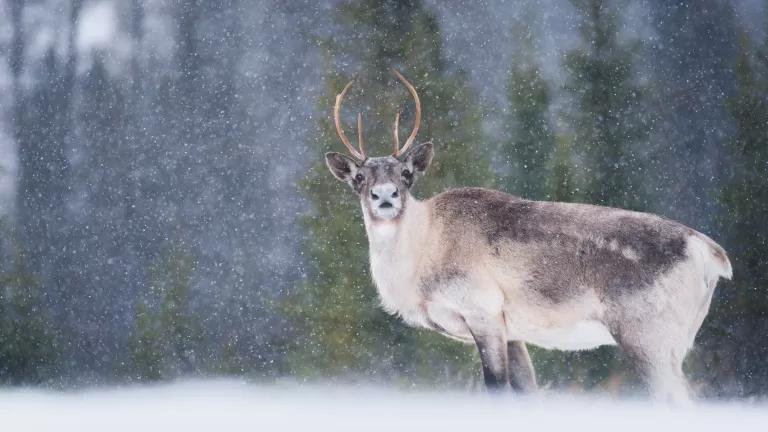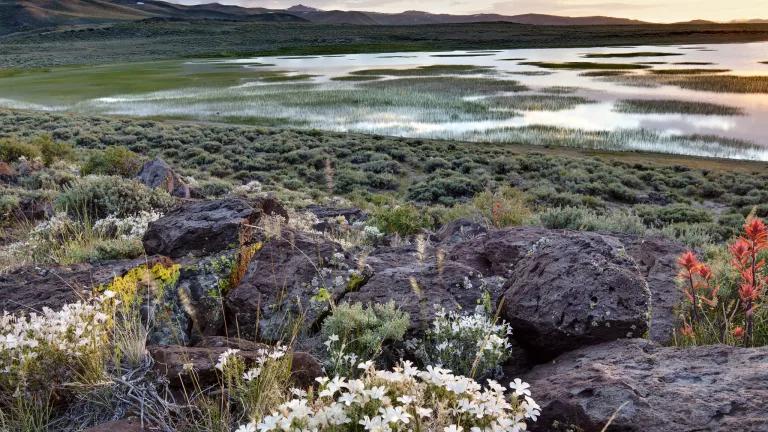
“We simply need that wild country available to us, even if we never do more than drive to its edge and look in. For it can be a means of reassuring ourselves of our sanity as creatures, a part of the geography of hope.”
American novelist Wallace Stegner wrote those words in 1960. Four years later, President Lyndon Johnson signed the Wilderness Act into law. That same year—1964—I was born.
I would not come to experience wilderness until my twenties. Yet, it has shaped who I am. And it has shaped who we are as Americans. Less than 4,000 words, the eloquent Act embodies an ethic. The Act speaks of areas “untrammeled by man, where man himself is a visitor who does not remain.” The Act creates a system for preserving these areas—managing them in a way that “will leave them unimpaired for future use and enjoyment.” The Act says that we value something larger than ourselves. It says that we care about those who come after us.
Over the past 50 years, the Wilderness Act has resulted in the permanent protection of 110 million acres of public lands from parts of the Everglades in Florida to the islands of Alaska’s Inside Passage. Rather than accommodating multiple uses like most public lands, wilderness designation protects the land undeveloped.
Douglas Brinkley wrote of one Wilderness Warrior in his engaging 2009 biography of Theodore Roosevelt. Having camped and danced before the firelight of a burning dead tree with John Muir, Roosevelt was responsible for placing Yosemite Valley and Mariposa Grove under federal control. Others would follow Roosevelt – building on the foundation that he created. Bob Marshall would join seven more to found the Wilderness Society in 1935. They sought to mobilize a growing sentiment in America “for holding wild areas sound-proof as well as sight-proof from our increasingly mechanized life.” Wallace Stegner, Pulitzer Prize-winning novelist, would write his Wilderness Letter, a passionate and compelling argument for permanent protection of the wild. Influenced by her youth on the wind-swept tundra of Fairbanks, Mardy Murie would add a female voice to the call for wilderness. Her writing and the scientific work of her husband Olas would make the far-away wilds of Alaska real to thousands including myself. Howard Zahniser, raised in Western Pennsylvania along the shores of the Allegheny River, would draft what would become the Wilderness Act.
We owe a debt to these thinkers and actors of the past. Yet, the Wilderness Act needs warriors as much today as yesterday. As society becomes more urbanized, we need wild places more. Only Congress can designate lands as wilderness. Yet, over 20 wilderness bills remain stalled on Capitol Hill. The Act’s promise rests in the hands of Congressional leaders. It also rests in the hands of Interior Secretary Jewel. She can lead by articulating the value of wilderness and making the case to Congress for specific areas deserving of wilderness protection.
The Act’s promise, however, also rests in my hands and in your hands. Countless, unnamed citizens have documented the wilderness quality of lands not yet designated. They have acted to protect these lands in the face of imminent threats such as oil and gas drilling in Utah, uranium mining in Arizona and dam construction in California. They have initiated conversations and kept them going - connecting diverse stakeholders in their community to find common ground in wilderness designation.

I have been fortunate to go past the edge—to go into wilderness and soak it in. Navigating the Middle Fork of Idaho’s Salmon River a week ago, I am miles from any road. Gazing upon rock walls unchanged for millions of years, I gather strength. Witnessing my daughter smile despite the rain and cold, I gather patience. Watching the day’s last light give way to night, I gather beauty.
As both the Wilderness Act and I turn 50, I have plenty of candles to blow out. As I do, I wish that we find the boldness and energy to enlarge our wilderness—to build on the foundation the Roosevelts, Stegners and Zahnisers created for us by adding to the wild places available to us and to those who come after us.



